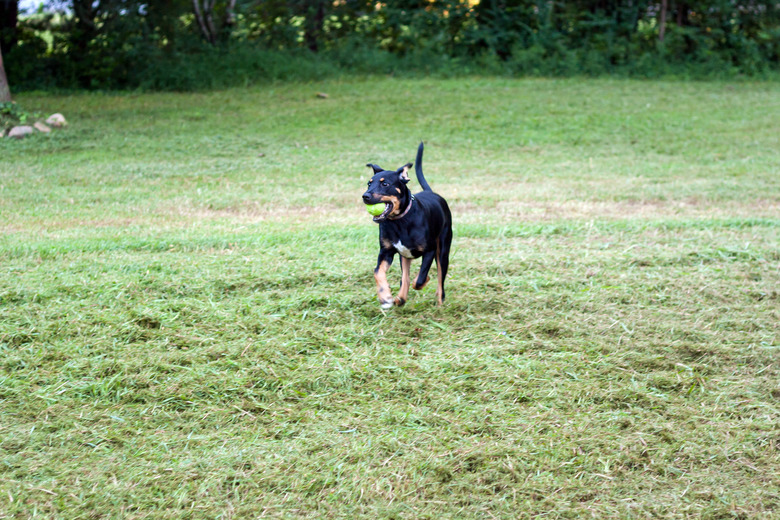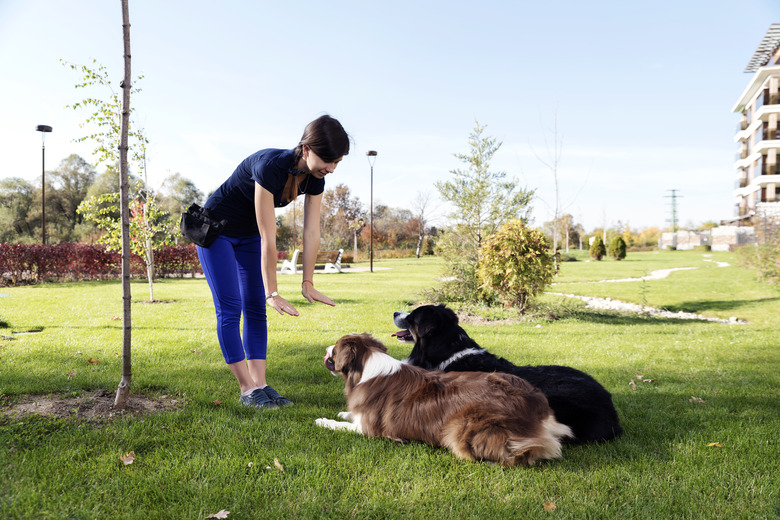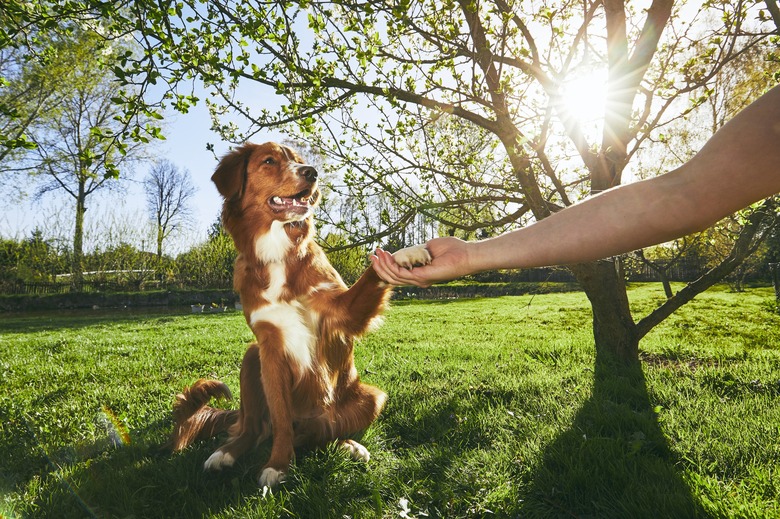How To Train Your 1-Year-Old Dog
For most breeds, a dog at 1 year old is considered an adult, but he still may be showing many puppylike behaviors. It's important to continue training your dog at this age as he might be testing his independence and showing undesirable behaviors. Training a 1 year old puppy requires patience, proper socialization, and a consistent training strategy. After all, everyone wants adult dogs with good recall.
Socializing a 1-year-old puppy
The first step to training your 1-year-old puppy is proper socialization. This is more challenging than socializing a puppy because your dog at 1 year old might have developed fears or reactivity around certain triggers. Move slowly when socializing — trainers at dog daycare centers can help. Socializing your dog with other dogs while a train staff members is watching for issues, such as timid or bully behaviors, can be advantageous to a young dog.
However, if you are introducing your dog to others on walks, and your dog reacts with fear, you are moving too quickly. Keep her at a safe distance from the new stimulus and reward as she pays attention to you rather than the stimulus. If she does well at one distance, move closer. Allow her to sniff when she is ready. Reward during all socialization training.
Basic dog training strategies
Basic dog training strategies
When training your 1-year-old puppy, there are some basic steps you can take to improve success rate. One-year-old dogs have a lot of energy, so you will need to increase exercise before training sessions to improve focus. They also need consistency. If you occasionally reward behaviors, such as jumping, with attention, those behaviors will continue.
Consistently ignore problem behaviors and reward behaviors you like, such as sitting. Using rewards is more effective than punishment, but remember to keep the treat as a reward, not a bribe. Don't have the treat in your hand where your dog can see it or he will learn to listen only when he sees a treat. Treats should be used in the early stages of training, but phased out as the dog learns the commands.
Important dog commands
Important dog commands
To keep your dog safe, teach her to come on command every time. Dogs with good recall are safer dogs. Teach this on leash first to prevent her from making mistakes. All dogs should know how to sit down, lie down, and walk on a leash. In addition, you should teach your dog a "leave it" or "off" command. This command allows you to teach her which items are appropriate for chewing and which are not.
Professional dog training options
Professional dog training options
If you have experience working with dogs, you might be able to train your dog alone. However, 1-year-old dogs can have a lot of energy and be more difficult to train than a young puppy. Dog training classes provide an excellent place to practice commands with your dog around other dogs. However, in-home training with a professional trainer allows you the chance to work on your dog's issues in your home, where training is the most useful.
Either way, comprehensive training cannot occur in an eight-week training class and doesn't end at one year old. Training is a lifelong commitment. You will have to do training refreshers throughout your dog's life.


